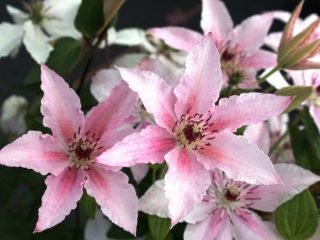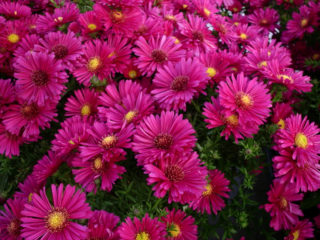Content
If rose buds do not open, this is most likely due to improper care. Plants are demanding; they need to be watered abundantly and fed regularly. If care is normal, most likely the lack of flowering is due to weather conditions. The main reasons and tips for solving the problem are described in the article.
Why do rose buds not bloom and dry out?
Roses are quite demanding, so even the slightest violation of the rules of care can cause the emerging bud to not open. In most cases, this is due to improper cultivation techniques. Although there may be objective factors related to the weather. The most common causes are detailed in the following sections.
Adverse weather conditions
Lack of flowering, when a bud appears but does not open, may be due to unfavorable weather. The rose needs good lighting, stable heat, the absence of prolonged drought, and temperature changes.
If the summer is cloudy, cool, and often rains, the inflorescences will indeed not open, even if buds have appeared.Against the background of temperature changes and frosts at night, the bush experiences severe stress, directing all its forces to the shoots, leaves and roots. Prolonged droughts can also prevent flowering. If the surface layer of soil has dried out completely, the plants must be watered immediately.
You can clarify this information in the description of the variety, as well as in the comments of gardeners on forums and in reviews.
Improper watering
It also happens that rose buds dry out without opening. This most likely indicates drought and lack of watering. Water is given to the bushes not very often, but plentifully. If there is no rain at all, you should water at least once a week.
It is necessary to be guided by the condition of the soil - if it dries out, additional moisture is required. Moreover, water must be given in large volumes, especially for mature bushes whose roots grow far into the depths. In the heat of the late evening, it will not be superfluous to spray the bush with a spray bottle.

If the bud does not bloom, this may be due to improper watering.
Nutrient deficiency
If rose buds dry out without opening, the reason may be due to insufficient fertilizing. The rose needs nutrients, so fertilizers must be given regularly, even if the soil is quite fertile (or depleted).
You can determine the deficiency of one or another element due to which the bud does not open by external signs. Very often plants lack nitrogen:
- bushes grow slowly;
- the foliage turns pale yellow;
- a shade of red appears on the underside of the leaves (along the veins).
If there is not enough phosphorus, the rose bud also does not open.In this case, the symptoms will be something like this:
- dark green, bluish foliage;
- petioles tinged with purple or violet;
- when tissues die, black spots form on the leaves;
- There is practically no flowering or it begins with a noticeable delay.
With a potassium deficiency, old foliage suffers greatly; it looks as if burned. Then the leaf blades acquire a dull, bluish or even bronze tint. From the edges they curl towards the center, and individual wrinkles form on the surface. The bud does not open, flowering is greatly delayed or not observed at all.
Diseases
If inflorescences do not appear, this is often associated with diseases. So, if a rose bud turns black without blooming, this is a clear sign of powdery mildew. This is an infectious fungal disease, the presence of which can be determined by a number of external signs:
- whitish or grayish coating on the leaves;
- small droplets or balls on the foliage (dark shade);
- brown-brown dense coating;
- the bush practically stops growing.

Due to powdery mildew, the bud does not open and the plant may die
Other diseases that cause the flower not to open include the following:
- mosaic;
- gray rot;
- different types of spots;
- rust;
- bacteriosis.
Pests
Pests can also be the reason for the lack of flowering. For example, if a rose bud rots without blooming, it is most likely due to spider mites. This is a dangerous pest of microscopic size and is almost impossible to see with the naked eye. The mite eats the foliage and produces black-brown rot. As a result, the bud appears, but does not open.
Damage can be determined by a number of signs:
- the presence of cobwebs on leaves, buds, shoots;
- light and pale yellow spots appear on the foliage;
- flowers, even if formed, dry out quickly;
- The bush as a whole looks weakened and lags behind in development.
The bud does not open due to the invasion of other pests. The greatest danger is posed by:
- scale insects;
- leaf rollers;
- rose sawflies;
- thrips;
- aphids and others.
What to do if rose buds do not bloom
If rose buds rot or dry out without blooming, you first need to determine the cause. It may be due to improper care, although if watering and fertilizing are given on time, most likely it is a weather factor. It is necessary to carefully examine the bushes and make sure there are no diseases, pests, or signs of nutrient deficiency.
Once the cause has been found, appropriate measures must be taken:
- The bushes should be watered every week (if there is no rain). An adult plant is given 15-20 liters of settled, pre-prepared water.
- Roses need to be fed regularly, at least three times a season. In April, give urea, saltpeter or other nitrogen fertilizer. During budding, it is important to increase nutrition with superphosphate and potassium. With a deficiency of these elements, flowering will be very weak.
- Periodically loosen the soil and carefully remove weeds. To keep them as small as possible, it is recommended to lay sawdust, straw, pine needles or other mulch.
- If signs of disease or insect infestation are detected, 1-2 treatments are carried out with drugs (folk remedies are not so effective).

Regular feeding and watering ensure long flowering
Preventive measures
When a rose has buds but does not bloom, solving this problem is quite difficult and time-consuming. To avoid it, it is recommended to follow basic preventive measures:
- Every spring (before the buds begin to swell), sanitary pruning is carried out. Remove old, broken, diseased branches and thin out the crown.
- Since the bud often does not open due to infections and insects, in early spring they are treated with fungicides to prevent fungal diseases. In May, preventive spraying with insecticides can be carried out.
- If the bud does not open, this may be due to winter frosts. The bushes need to be covered with a polystyrene foam cone or agrofibre, mulched with straw and hay.
- Also, for prevention, you should follow the watering norm. The bud often does not open due to excess water. To prevent this from happening, you need to monitor the weather forecast and the degree of moisture in the surface layer of the soil.
Conclusion
Rose buds do not open for various reasons. Moreover, these are often maintenance errors - irregular watering, lack of nutrients in the required quantity, and others. To solve the problem, it is important to correctly identify the cause and begin treatment as quickly as possible.








